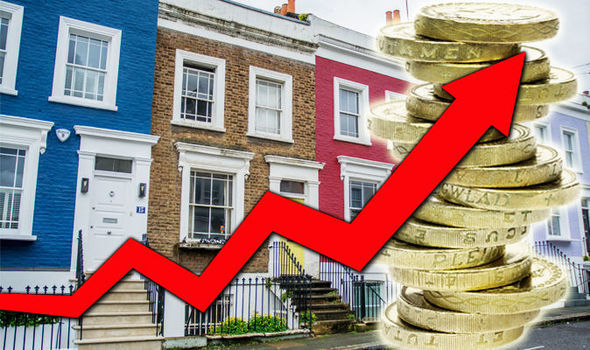Housing affordability in England has deteriorated to its worst levels since records started in 1999, according to the Office for National Statistics (ONS).
In the year to the end of March 2021, the average home sold in England cost £275,000 – the equivalent of 8.7 times the average annual disposable household income, the ONS said.
In Wales, where the average house price was £176,000, the ratio was 6.0, and in Scotland, where the average house price was £166,000, it was 5.5.
The ONS cautioned that income estimates last year were affected by the coronavirus pandemic.
"The dream of owning your own home is rapidly disappearing", says Helen Morrissey of Hargreaves Lansdown.
In Wales, the affordability ratio peaked in 2007 and in Scotland it peaked a year later, in 2008, the ONS said.
But its report continued: “Affordability ratios in England are worse than at any point since the series began in 1999.”
Back in 1999, a house in England typically cost about 4.4 times average earnings – slightly over half of the latest affordability ratio of 8.7.
Following the 2008 financial crisis and up to about 2013, affordability improved modestly in all three countries, the ONS said.
Since 2014, ratios in England have increased and are now beyond their 2008 peak, resulting in an increased affordability gap between England and the other two countries, it added.
House prices have been hitting a string of record highs in recent months, despite the cost of living crisis. Shortages of properties for buyers to choose from have been pushing prices up, according to housing market experts.
The ONS said that while the North East is generally the most affordable English region for housing, an averagely-priced home there would still cost nearly 12 years of income for a low-income household.
In London, an averagely-priced home would cost around 40 years’ worth of income for a low-income household.
Helen Morrissey, senior pensions and retirement analyst at Hargreaves Lansdown, said: “The dream of owning your own home is rapidly disappearing with the average home sold in England costing the equivalent of 8.7 times annual disposable income.”
She continued: “These figures were taken up until March 2021, but the market has continued to race away since then with wages nowhere near keeping up.
“There may be early signs the housing market is starting to cool but the reality is it is becoming beyond many people’s reach.”
Ms Morrissey added: “The situation will become more challenging still as interest rates have been on the increase, pushing up mortgage costs.
“This, along with the cost of living crisis continuing to bite huge chunks out of our income, will further affect affordability in the coming years.”
"It's not just an insufficient level of wage growth and the high cost of a deposit that is pricing many out of the market, there’s also the additional costs such as stamp duty and solicitors fees to consider" says Marc von Grundherr of Benham and Reeves.
Marc von Grundherr, director of estate agent Benham and Reeves, said: “Climbing the ladder is an incredibly tough task in today’s market, where only those with the financial collateral of an existing property can comfortably negotiate the cost of a property purchase.
“It’s not just an insufficient level of wage growth and the high cost of a deposit that is pricing many out of the market, there’s also the additional costs such as stamp duty and solicitors’ fees to consider.
“When combined, the financial hurdle to securing a foot on the ladder is quite staggering and so it’s no wonder that we’re seeing a move towards long-term renting as a lifestyle choice, not just a necessity.”
Timothy Douglas, head of policy and campaigns at estate and letting agents’ body Propertymark, said: “The current availability pressures within the market are a key factor to rising house prices but this is expected to start to slow at the end of this year.
“However, this will not be enough to level out the imbalance in supply and demand.”

